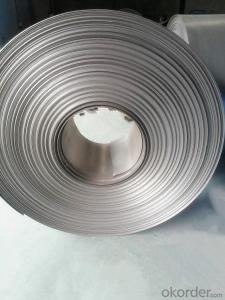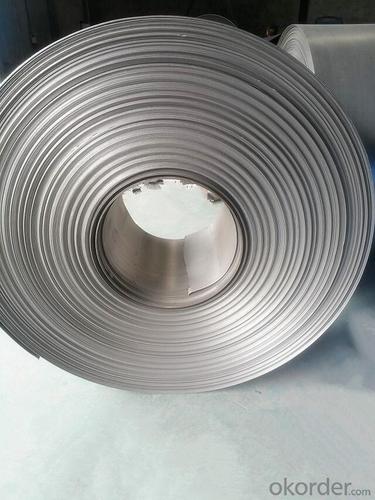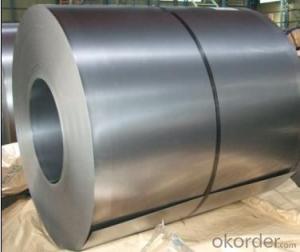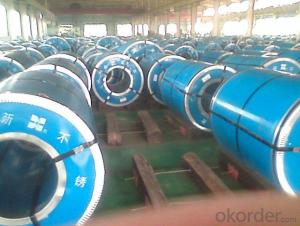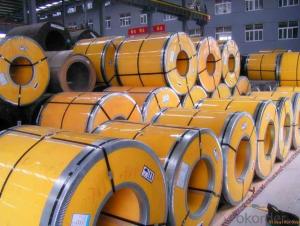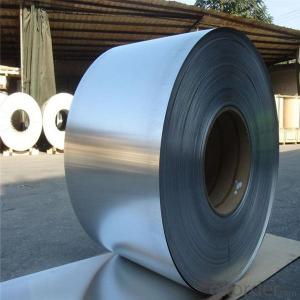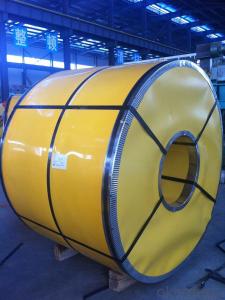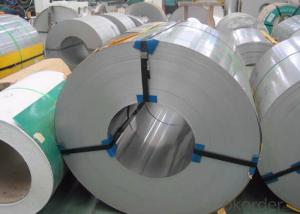304 SERIOUS HOT ROLLED STAINLESS STEEL COILS/SHEETS
- Loading Port:
- Guangzhou
- Payment Terms:
- TT OR LC
- Min Order Qty:
- 100 m.t.
- Supply Capability:
- 20000 m.t./month
OKorder Service Pledge
Quality Product, Order Online Tracking, Timely Delivery
OKorder Financial Service
Credit Rating, Credit Services, Credit Purchasing
You Might Also Like
Quick Details
| Grade: | 300 Series,304 | Standard: | JIS,AISI,ASTM,GB,DIN,EN | Length: | 1000-6000mm |
| Thickness: | 0.3-100mm | Width: | 1000-2000mm | Place of Origin: | foshan |
| Brand Name: | CNBM | Model Number: | 304 | Type: | Coil |
| Application: | construction, building, shipbuilding etc | Certification: | SGS | Surface: | 2B,BA,No.1,No.4,HK,Mirror finish,brush ,hairline |
| Producitivity: | 800Tons/Month | Loading Port: | guangzhou | Main market: | india,Japan,Saudi Arabia,Singapore,Indonesia etc |
| Supply status: | cold rolled and hot rolled |
Packaging & Delivery
| Packaging Detail: | standard export packing stainless steel coil grade 304 |
| Delivery Detail: | 7-10 workdays |
Specifications
1,stainless steel coil grade 304
2,Thickness:0.3-100mm
3.Width:50-3000mm
4,Length:1000-6000
5,Deliver time:5 days
- Q: Can stainless steel strips be used in automotive applications?
- Certainly, automotive applications readily benefit from the use of stainless steel strips. Renowned for its exceptional corrosion resistance, durability, and strength, stainless steel emerges as the ideal substance for a wide array of automotive components. Exhaust systems, fuel tanks, body panels, trim, and even structural elements frequently employ this material during their manufacturing process. Stainless steel strips can be shaped, welded, and fabricated into diverse sizes and forms, offering automotive design with unparalleled versatility and flexibility. Moreover, the aesthetic charm and long-lasting visual appeal that stainless steel preserves over time contribute to its widespread popularity among automotive applications.
- Q: Can stainless steel strips be electroplated?
- Yes, stainless steel strips can be electroplated.
- Q: How do stainless steel strips perform in the presence of alkalis?
- Stainless steel strips generally perform well in the presence of alkalis. The corrosion resistance of stainless steel is primarily due to the presence of chromium, which forms a passive oxide layer on the surface of the steel. This oxide layer prevents the steel from reacting with the surrounding environment, including alkalis. Alkalis, such as sodium hydroxide (caustic soda) or potassium hydroxide, are typically strong bases that have a high pH. Stainless steel is known for its resistance to corrosion in alkaline environments, as the passive oxide layer provides a strong barrier against the alkali's attack. However, it is important to note that the performance of stainless steel in alkalis can vary depending on the specific grade of stainless steel being used and the concentration and temperature of the alkali solution. In some cases, highly concentrated or elevated temperatures can lead to localized corrosion or stress corrosion cracking in stainless steel. To ensure optimal performance, it is recommended to select the appropriate grade of stainless steel based on the specific alkali being used, and to consider factors such as concentration, temperature, and exposure time. Consulting with corrosion experts or stainless steel manufacturers can provide further guidance on the best stainless steel grade for a specific alkali application.
- Q: Are stainless steel strips suitable for heat treatment processes?
- Yes, stainless steel strips are suitable for heat treatment processes. Heat treatment is a common process used to modify the physical and mechanical properties of metals, including stainless steel. By subjecting stainless steel strips to controlled heating and cooling cycles, it is possible to alter their hardness, strength, and other properties to meet specific requirements. Heat treatment processes such as annealing, quenching, tempering, and precipitation hardening can be applied to stainless steel strips to improve their machinability, formability, and resistance to corrosion. However, it is important to consider the specific grade and composition of stainless steel being used, as some grades may have limitations on the extent of heat treatment that can be applied. Consulting with a metallurgist or material specialist is recommended to ensure the appropriate heat treatment process is selected for specific stainless steel strips.
- Q: How do stainless steel strips perform in extreme cold temperatures?
- Stainless steel strips perform exceptionally well in extreme cold temperatures due to their inherent resistance to corrosion, durability, and ability to maintain their mechanical properties.
- Q: How do stainless steel strips resist intergranular corrosion in welding?
- The primary reason why stainless steel strips are resistant to intergranular corrosion during welding is the presence of chromium. Chromium forms a protective oxide layer on the surface of the steel, which acts as a barrier against oxygen and other corrosive agents. This oxide layer, also known as a passive film, prevents these agents from reaching the underlying metal. During the welding process, the high temperatures can cause the formation of chromium carbides at the weak grain boundaries of the stainless steel. These carbides can reduce the chromium content, making the steel vulnerable to intergranular corrosion. To prevent this, stainless steel strips are typically alloyed with elements such as niobium or titanium. These elements have a strong attraction to carbon. When combined with carbon, they form carbides, allowing the chromium to remain free and form the protective oxide layer. This process is referred to as carbide precipitation or sensitization. Furthermore, stainless steel strips can undergo a heat treatment process called solution annealing or sensitization annealing. This involves heating the steel to a specific temperature and holding it there for a certain period of time. This process allows the carbides to dissolve back into the steel matrix, restoring the chromium content at the grain boundaries and eliminating the susceptibility to intergranular corrosion. In conclusion, the combination of alloying elements and heat treatment plays a crucial role in maintaining the corrosion resistance of stainless steel strips during welding. They prevent the formation of chromium-depleted regions and ensure the integrity of the protective oxide layer.
- Q: What are the recommended packaging methods for 111 stainless steel strips?
- The recommended packaging methods for 111 stainless steel strips may vary depending on the specific requirements and preferences of the customer or manufacturer. However, there are a few commonly used packaging methods that are generally recommended for stainless steel strips: 1. Wooden Crates: Stainless steel strips can be packed in wooden crates to provide stability and protection during transportation. The crates are typically lined with foam or other cushioning materials to prevent scratching or damage to the strips. 2. Cardboard Boxes: For smaller quantities or shorter distances, stainless steel strips can be packed in sturdy cardboard boxes. The boxes should be strong enough to withstand the weight and dimensions of the strips and may be lined with plastic or paper to protect against moisture. 3. Plastic Wrapping: Stainless steel strips can also be individually wrapped in plastic or shrink-wrapped to provide a barrier against moisture, dust, and other contaminants. This method is commonly used when the strips need to be stored or transported in bulk. 4. Metal Banding: To secure and bundle stainless steel strips, metal banding or strapping can be used. This method ensures that the strips remain tightly packed together during transit, minimizing the risk of damage or shifting. 5. Vacuum Sealing: In certain cases, stainless steel strips may require airtight packaging to protect against corrosion or oxidation. Vacuum sealing the strips in moisture-resistant bags or pouches can help create a protective barrier and extend the shelf life of the product. It is important to note that the recommended packaging method may also depend on the specific conditions of storage or transportation, such as temperature, humidity, and duration. It is advisable to consult with the manufacturer or supplier for their specific recommendations based on the characteristics of the stainless steel strips and the intended use.
- Q: Are stainless steel strips suitable for architectural signage?
- Architectural signage can benefit greatly from the use of stainless steel strips. This material is a popular choice due to its durability, aesthetic appeal, and resistance to corrosion. With its versatility, stainless steel can be easily shaped into different sizes and forms to create various types of signage, including letters, logos, and plaques. When it comes to appearance, stainless steel strips offer a sleek and modern look that can complement any architectural design. They can be finished in different ways, such as brushed, polished, or etched, to achieve the desired visual effect. Not only do they look good, but they also provide excellent weather resistance, making them suitable for both indoor and outdoor signage. Apart from its visual qualities, stainless steel is highly durable and can withstand harsh environmental conditions. It is resistant to corrosion, rust, and fading, ensuring that the signage remains visually appealing and readable for a long time. This makes stainless steel strips a reliable choice for architectural signage, especially in areas with high levels of foot traffic or exposure to extreme weather. Another advantage of using stainless steel is its low maintenance requirements. It is easy to clean and maintain, making it a cost-effective choice in the long run. In summary, stainless steel strips are a suitable option for architectural signage due to their durability, aesthetic appeal, resistance to corrosion, and low maintenance requirements. Whether it's for commercial buildings, residential complexes, or public spaces, stainless steel signage can add a touch of sophistication and professionalism to any architectural project.
- Q: Can stainless steel strips be used in pulp and paper industries?
- Yes, stainless steel strips can be used in pulp and paper industries. Stainless steel is highly resistant to corrosion and has excellent strength and durability, making it ideal for various applications in these industries such as forming, cutting, and packaging machinery. Additionally, stainless steel strips can withstand high temperatures and exposure to chemicals, making them suitable for use in harsh environments commonly found in pulp and paper production.
- Q: How are stainless steel strips different from carbon steel strips?
- Stainless steel strips and carbon steel strips differ in various aspects, making them suitable for different applications. The main distinction lies in their composition and the presence of additional elements. Stainless steel strips are primarily composed of iron and chromium, with the addition of other elements such as nickel, molybdenum, and manganese. This composition gives stainless steel its corrosion-resistant properties, making it ideal for applications where exposure to moisture or chemicals is expected. Additionally, stainless steel strips possess excellent heat resistance, making them suitable for high-temperature environments. On the other hand, carbon steel strips consist mainly of iron and carbon, with minimal amounts of other elements. Carbon steel is known for its strength and durability, making it suitable for applications that require high tensile strength and hardness. However, carbon steel is susceptible to corrosion, especially when exposed to moisture or certain chemicals. Another key difference between stainless steel and carbon steel strips is their appearance. Stainless steel has a distinct silver-gray color and a smooth, shiny surface, giving it an aesthetically pleasing look. Carbon steel, on the other hand, usually has a duller appearance, with a rougher surface texture due to the presence of impurities. Furthermore, stainless steel strips are more expensive than carbon steel strips due to the additional elements used in their composition, as well as their superior corrosion resistance and other properties. This cost difference is an important consideration when choosing between the two materials for a specific application. In summary, stainless steel strips and carbon steel strips differ in terms of their composition, corrosion resistance, heat resistance, appearance, and cost. Understanding these differences is crucial in selecting the appropriate material for a particular application, ensuring optimal performance and longevity.
Send your message to us
304 SERIOUS HOT ROLLED STAINLESS STEEL COILS/SHEETS
- Loading Port:
- Guangzhou
- Payment Terms:
- TT OR LC
- Min Order Qty:
- 100 m.t.
- Supply Capability:
- 20000 m.t./month
OKorder Service Pledge
Quality Product, Order Online Tracking, Timely Delivery
OKorder Financial Service
Credit Rating, Credit Services, Credit Purchasing
Similar products
Hot products
Hot Searches
Related keywords
